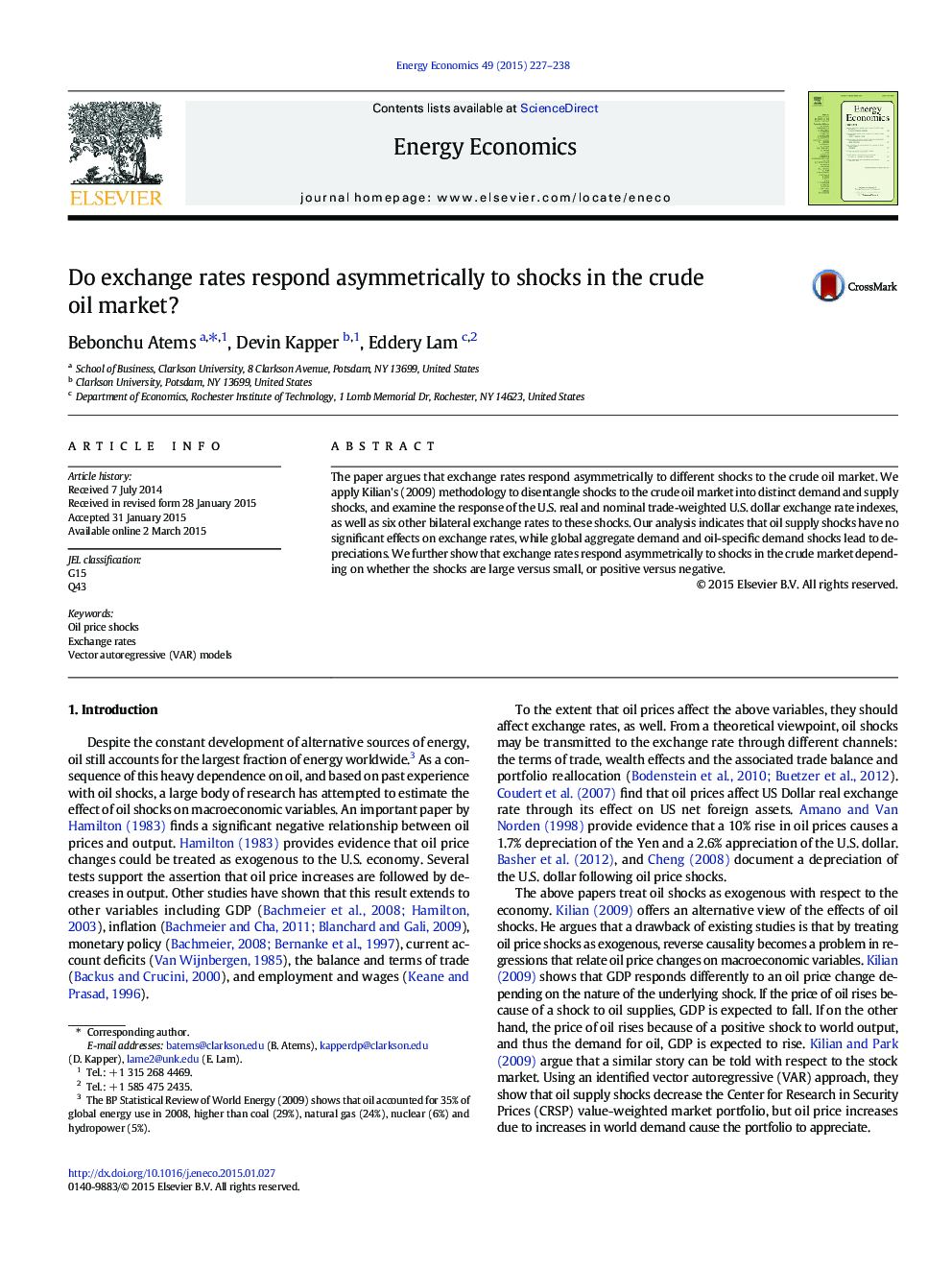| کد مقاله | کد نشریه | سال انتشار | مقاله انگلیسی | نسخه تمام متن |
|---|---|---|---|---|
| 5064482 | 1476714 | 2015 | 12 صفحه PDF | دانلود رایگان |
- We decompose shocks to the U.S. crude oil market into demand and supply shocks.
- Exchange rates respond differently to oil supply, aggregate demand, and oil-specific demand shocks.
- Responses also differ depending on whether shocks are large or small, and positive or negative.
The paper argues that exchange rates respond asymmetrically to different shocks to the crude oil market. We apply Kilian's (2009) methodology to disentangle shocks to the crude oil market into distinct demand and supply shocks, and examine the response of the U.S. real and nominal trade-weighted U.S. dollar exchange rate indexes, as well as six other bilateral exchange rates to these shocks. Our analysis indicates that oil supply shocks have no significant effects on exchange rates, while global aggregate demand and oil-specific demand shocks lead to depreciations. We further show that exchange rates respond asymmetrically to shocks in the crude market depending on whether the shocks are large versus small, or positive versus negative.
Journal: Energy Economics - Volume 49, May 2015, Pages 227-238
